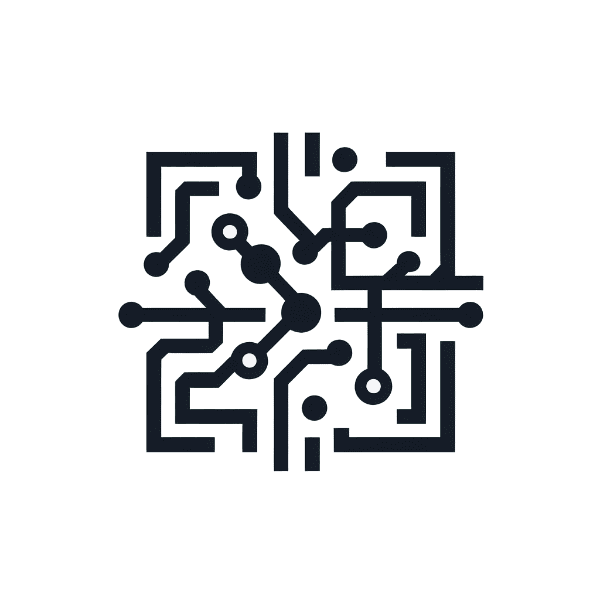
Digital HUB is an open online community of financial and data science professionals pursuing practical applications of AI in their everyday functions. Digital HUB community provides expert, curated insights into financial applications of Generative AI, Large Language Models, Machine Learning, Data Science, Crypto Assets and Blockchain.
A key focus for The Digital HUB publication is to provide best practices for the safe deployment of AI at scale such as: assessing the ability to execute, determining an organization’s digital DNA, fostering skill development, and encouraging responsible AI.
Digital HUB is an open online community of financial and data science professionals pursuing practical applications of AI in their everyday functions. Digital HUB community provides expert, curated insights into financial applications of Generative AI, Large Language Models, Machine Learning, Data Science, Crypto Assets and Blockchain.
A key focus for The Digital HUB publication is to provide best practices for the safe deployment of AI at scale such as: assessing the ability to execute, determining an organization’s digital DNA, fostering skill development, and encouraging responsible AI.
In today's rapidly evolving business landscape, companies face the pressing need to adapt and embrace digital transformation to stay competitive. The disruptive forces of technology have revolutionized industries across the board, requiring organizations to rethink their strategies, processes, and customer experiences. To gain valuable insights into this transformative journey, I had the privilege of sitting down with Tamara Zimmerman, Head of EY WavespaceTM and Innovation at EY Canada. Our conversation focused on the advice they have for companies aspiring to innovate and embrace digital transformation, as well as the necessary conditions for success. The following interview sheds light on the crucial steps and key considerations required for companies to thrive in an era of digital disruption.
(Links were inserted into the article where specific people or events were referenced.)
Cordell: You’ve been working in digital transformation and innovation for over two decades, how would you say it has evolved over the years? Have you found differences in the pace over the years?
Tamara: The pace of innovation is significantly increasing year over year and as technologies become more accessible, the way organizations think about generating new value becomes more mature. In particular, over the last few years we’ve observed that organizations are increasingly focused on generating business value by tapping into new innovative technologies.
Cordell: What characteristics within companies have you found to be necessary to effect change and succeed in their transformation goals?
Tamara: Here are four characteristics that come to mind:
·Openness to challenge the status quo – this includes the need to think differently about the possibilities of transformational change and the untapped value it can bring.
·Taking a human-centered approach to transformation – including early engagement of stakeholders so that all relevant parties are included in defining and enabling the change journey.
·An organization’s ability to operate in a dual mode – meaning they can continue with current operations without compromising the current business model while simultaneously effectively planning new operational processes.
·A relentless focus on business outcomes – this includes a commitment to tracking and reporting to realize value.
EY’s Human@Centre approach dives into this further by covering the 6 drivers of successful transformation. Within it, my colleague, Gordon Sanford, Partner, Digital Transformation and Future Ready Workforce, shares his perspective and reveals that: “Taking a human-centric approach is key to successful transformation. The human element should not be seen as a single workstream, but as a focal point underpinning and enabling the entire transformation”.
Cordell: What have you found to be the greatest impediment for companies to implement change?
Tamara: As with any change, the greatest impediment to achieving the envisioned results tends to be the quality and scale of adoption. The organizations that get it right are the ones that spend as much time and energy, if not more, on change management. This means taking the time to ensure that all stakeholders involved understand not only how to execute the change but also the why and the value behind it. The earlier stakeholders are involved in the process of defining the change, the better the implementation and results.
Cordell: Explain a little bit about the discovery process you go through with companies when you first start a new mandate.
We typically take an outside-in and inside-out view to helping organizations think through innovation and transformation. There are three key elements that are important to get this approach right from the start:
·Firstly, it is important to start with a clear understanding of the current state and align on a high-level, purpose-driven aspiration for the future.
·Secondly, a clearly articulated ‘exam question’ outlining the opportunity to explore or the business problem to be solved.
·Thirdly, a good understanding of all relevant stakeholder perspectives, coupled with a solid market scan of case studies and success stories from across geographies and industries to get inspired by the art of the possible and avoid getting stuck in ‘status quo’ thinking.
Cordell: Is there any weakness within a company’s culture or structure that you would identify right away as being a problem? And how do you deal with that?
Tamara: Every organization has its strengths and weaknesses, but the most common barrier to realizing impactful innovation is the natural tendency for large organizations to work in silos. Organizations that bring silos together early on, will be better positioned to envision, define, and implement change.
Cordell: What advice do you have for companies that are just starting on the transformation process?
Tamara: My number one piece of advice is to think of this as the new normal. A transformation journey is never complete – fostering an organizational culture that can embrace change is one of the most impactful things an organization can do to drive long-term success.
Cordell: We’ve spoken a lot about transformation at the company level. What about at the individual level. What can individuals at a company do to create innovation and enable digital transformation?
Tamara: The more an individual is curious and willing to learn new things, the more they will be able to contribute to and enable an organization’s innovation journey. That is not to say that all individuals in a company need to innovate – in fact that would probably have the opposite effect of driving a cohesive, strategic transformation plan. Fostering a culture of innovation by encouraging curiosity, learning and even providing an inlet for innovative ideas from professionals who want to contribute to the transformation strategy is an important way for an organization to harness the innovation potential of the individuals that make up the organization.
Cordell: How is EY Canada approaching AI? Given how new these applications are, how do you as an organization learn what to do fast enough to be effective for your clients, and better than your competition?
Tamara: At EY, we help our clients drive exponential transformation through applied AI. We work with clients, ecosystem partners and alliance partners to bring cutting edge solutions to market. For example, we recently announced our strategic collaboration with Microsoft to develop EY Intelligent Payroll Chatbot leveraging Azure Open AI as part of the Next Gen Payroll Platform. We work relentlessly to drive new business value in the market and are proud to have been recognized as a Leader in AI Services in the 2023 IDC Marketscape: Worldwide Artificial Intelligence Services, as well as being named the 2022 Global AI Partner of the year from Microsoft Partner of the Year Awards.
Biren Agnihotri, EY Canada Partner and National Leader, Digital and Emerging Technologies and Data, Analytics and AI, has helped lead EY Canada’s efforts in becoming a trailblazer in AI. Over seven years ago, we became founding members of the Vector Institute for Artificial Intelligence, worked with MILA - Montreal Institute of Learning Algorithms and partnered with MIT CSAIL from an academic perspective. We have also built a sizeable practice of data scientists to help our financial and non-financial services clients in Canada. We got involved early on with our clients to build their AI Centers of Excellence. We have been continuously investing in these sorts of disruptive technologies and recently started our own Generative AI Center of Excellence. We have built many assets in the short period of time since this technology launched and are using our experience to help our clients with their AI strategies. At EY Canada, we are forward-thinking with these technologies, and we focus on choosing high value use cases for our clients. Rather than prioritizing the technology first, we use a sector-first lens. This unique combination of sector expertise, technology expertise and a focus on value generation is a unique recipe for us. We also continuously encourage our staff to grow professionally from an education perspective and pilot many tools or solutions internally to learn from experience and then bring it to our clients. Our clients are always getting a curated view of these AI innovations and we are minimizing their risk.
Cordell: Tammy, more on a personal level, what do you love about your job, and what are you most passionate abut?
Tamara: The best thing about being in this field is the opportunity to constantly be working on new challenges with new people. Every context has its unique circumstances, every organization has its unique culture, and every business has its own way of defining and realizing new value. While we use proven methods and models from our experience to help organizations innovate and transform, there are always new and different kinds of value that are identified, created, and delivered. It’s a really exciting balance between bringing expertise to the table and being part of creating something new in every initiative we take on.
Cordell: And how do you, an industry veteran, get better at what you do and improve your own skill set?
Tamara: Every project is an opportunity to learn and grow. I think that as long as you never assume that you have all the answers, you will learn new things and pick up new skills in everything you do. Of course, it is also important to proactively take initiative to sharpen your skills and capabilities by pursuing relevant professional development opportunities. At EY, we are lucky to have excellent, high quality, learning opportunities. For example, I recently had the privilege of attending the Disruptive Technology Program at our EY Tech University in Palo Alto. I also make it a point to be proactive in staying up to date by reading the latest thought leadership from trusted sources while also making the time to meet with colleagues in both my internal and external networks to keep a pulse on what is happening on the ground.
Cordell: Tammy, thank you so much for talking with me. We really appreciate it!
Acknowledgements: The DigitalHUB team would like to thank Biren Agnihotri and Gordon Sanford of EY Canada for their contributions to the article.

